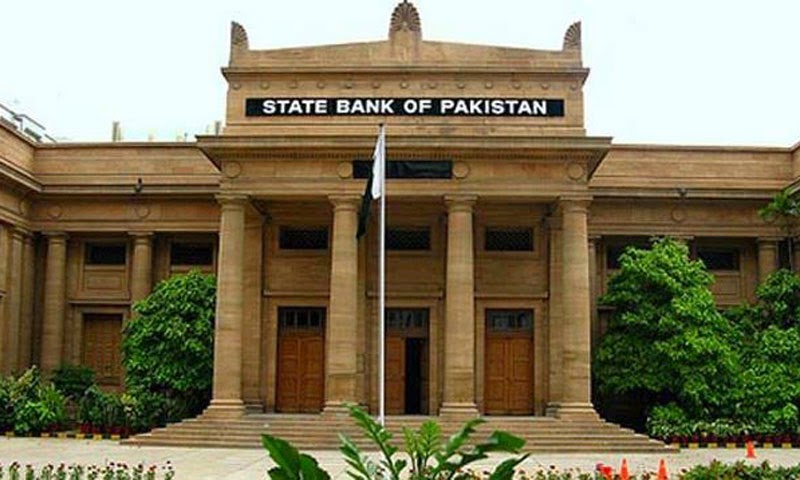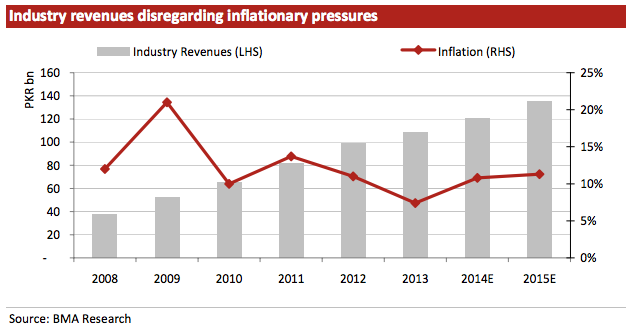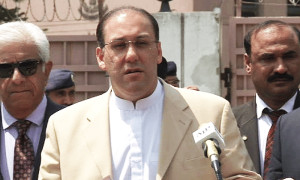RiazHaq
Senator (1k+ posts)
A headline in the Economist magazine's recent issue screams: "Bangladesh's GDP per person is now higher than Pakistan's". Let's examine this development to understand its causes.
Per Capita GDP:
The Economist article explains its headline as follows: "Last month revealed a remarkable turnaround. Bangladesh’s GDP per person is now higher than Pakistan’s. Converted into dollars at market exchange rates, it was $1,538 in the past fiscal year (which ended on June 30th). Pakistan’s was about $1,470....Strange as it may sound, Bangladesh jumped ahead because of an advance in Pakistan. On August 25th Pakistan released the results of its census, updating earlier population estimates. They showed that the country has 207.8m people, more than 9m more than previously thought. It may now have the fifth biggest population in the world, surpassing Brazil’s. But the new count also lopped 4-5% off Pakistan’s GDP per person, the arithmetic consequence of revealing so many more people."
Economic Growth Trends:
One can quibble with the Economist on details of its report but the fact remains that Bangladesh's economy has been growing significantly faster than Pakistan's for about a decade. To understand why, it's important to look into savings and investments, population growth trends and security situation in the two countries. Let's examine each in a little more detail.
Savings and Investment:
There's a strong relationship between investment levels and gross domestic product. The more a country saves and invests, the higher its economic growth. A State Bank of Pakistan report explains it as below:
"National savings (in Pakistan) as percent of GDP were around 10 percent during 1960s, which increased to above 15percent in 2000s, but declined afterward. Pakistan’s saving rate also compares unfavorably with that in neighboring countries: last five years average saving rate in India was 31.9 percent, Bangladesh 29.7 percent, and Sri Lanka 24.5 percent..... Similarly, domestic savings (measured as national savings less net factor income from abroad) also declined from about 15 percent of GDP in 2000s, to less than 9 percent in recent years. Domestic savings are imperative for sustainable growth, because inflow of income from abroad (remittances and other factor income) is uncertain due to cyclical movements in world economies, exchange rates, and external shocks".
Population Trends:
The total fertility rate (TFR) in Bangladesh has declined faster in Bangladesh than in Pakistan in the last few decades. Currently, Bangladesh is at 2.17 children per woman while Pakistan is at 2.62 children per woman.
As a result of reduced birth rates and more female labor participation rates, a larger percentage of Bangladeshi population is in the work force than Pakistan's. There are now more wage earners and fewer dependents in each Bangladeshi household. This demographic trend has helped boost Bangladesh's per capita income faster than Pakistan's.
Rising working age population and growing workforce participation of both men and women in Pakistan will significantly boost domestic savings and investment. Increased foreign direct investment such as Chinese investment in China-Pakistan Economic Corridor over the next several decades will help fill the gap between the national savings rate and investments required to reach 7% annual GDP growth to create over 2 million jobs a year.
Security Issues:
Pakistan has paid a heavy price for its proximity to and involvement in "war on terror" in Afghanistan. It has cost Pakistan dearly in terms of loss of thousands of precious lives and lower investments due to investors' security concerns. Recent operations by Pakistan Army have helped turn the tide against terrorists, bringing more hope and greater confidence in Pakistan's future. Rising FDI in CPEC-related projects in the last couple of years are an indication of this confidence.
Future:
Pakistan is now experiencing the demographic dividend that Bangladesh has seen in the last few decades in terms of more of its population earning and fewer dependents. Pakistan's labor force is growing at 3.6% a year, much faster than its population growth rate of 2.34%. This should help boost Pakistan's per capita and its domestic savings rate.
At the same time, China-Pakistan Economic Corridor (CPEC) related projects are bringing more foreign direct investment, thereby speeding up the economic growth in the country. Pakistan's GDP growth is accelerating from less than 5% two years ago to 6% forecast for fiscal 2017-18. In its latest economic growth projections, Kennedy School's Center for International Development (CID) at Harvard University expects Pakistan's annual GDP growth to average 5.97% over the next 8 years, ranking it as the world's 6th fastest growing economy. It is within the realm of possibility that economic growth in Pakistan could exceed 7% in the next couple of years.
Summary:
Pakistan has fallen behind Bangladesh and India in per capita income as its growth rates have slipped in recent years mainly due to declining savings and investment rates and security issues. Demographic trends and improved security situation now favor Pakistan's future growth as its workforce grows and household sizes shrink.
Per Capita GDP:
The Economist article explains its headline as follows: "Last month revealed a remarkable turnaround. Bangladesh’s GDP per person is now higher than Pakistan’s. Converted into dollars at market exchange rates, it was $1,538 in the past fiscal year (which ended on June 30th). Pakistan’s was about $1,470....Strange as it may sound, Bangladesh jumped ahead because of an advance in Pakistan. On August 25th Pakistan released the results of its census, updating earlier population estimates. They showed that the country has 207.8m people, more than 9m more than previously thought. It may now have the fifth biggest population in the world, surpassing Brazil’s. But the new count also lopped 4-5% off Pakistan’s GDP per person, the arithmetic consequence of revealing so many more people."
Economic Growth Trends:
One can quibble with the Economist on details of its report but the fact remains that Bangladesh's economy has been growing significantly faster than Pakistan's for about a decade. To understand why, it's important to look into savings and investments, population growth trends and security situation in the two countries. Let's examine each in a little more detail.

|
| Source: State Bank of Pakistan |
Savings and Investment:
There's a strong relationship between investment levels and gross domestic product. The more a country saves and invests, the higher its economic growth. A State Bank of Pakistan report explains it as below:
"National savings (in Pakistan) as percent of GDP were around 10 percent during 1960s, which increased to above 15percent in 2000s, but declined afterward. Pakistan’s saving rate also compares unfavorably with that in neighboring countries: last five years average saving rate in India was 31.9 percent, Bangladesh 29.7 percent, and Sri Lanka 24.5 percent..... Similarly, domestic savings (measured as national savings less net factor income from abroad) also declined from about 15 percent of GDP in 2000s, to less than 9 percent in recent years. Domestic savings are imperative for sustainable growth, because inflow of income from abroad (remittances and other factor income) is uncertain due to cyclical movements in world economies, exchange rates, and external shocks".

|
| Source: State Bank of Pakistan |
Population Trends:
The total fertility rate (TFR) in Bangladesh has declined faster in Bangladesh than in Pakistan in the last few decades. Currently, Bangladesh is at 2.17 children per woman while Pakistan is at 2.62 children per woman.
As a result of reduced birth rates and more female labor participation rates, a larger percentage of Bangladeshi population is in the work force than Pakistan's. There are now more wage earners and fewer dependents in each Bangladeshi household. This demographic trend has helped boost Bangladesh's per capita income faster than Pakistan's.
Rising working age population and growing workforce participation of both men and women in Pakistan will significantly boost domestic savings and investment. Increased foreign direct investment such as Chinese investment in China-Pakistan Economic Corridor over the next several decades will help fill the gap between the national savings rate and investments required to reach 7% annual GDP growth to create over 2 million jobs a year.
Security Issues:
Pakistan has paid a heavy price for its proximity to and involvement in "war on terror" in Afghanistan. It has cost Pakistan dearly in terms of loss of thousands of precious lives and lower investments due to investors' security concerns. Recent operations by Pakistan Army have helped turn the tide against terrorists, bringing more hope and greater confidence in Pakistan's future. Rising FDI in CPEC-related projects in the last couple of years are an indication of this confidence.
Future:
Pakistan is now experiencing the demographic dividend that Bangladesh has seen in the last few decades in terms of more of its population earning and fewer dependents. Pakistan's labor force is growing at 3.6% a year, much faster than its population growth rate of 2.34%. This should help boost Pakistan's per capita and its domestic savings rate.
At the same time, China-Pakistan Economic Corridor (CPEC) related projects are bringing more foreign direct investment, thereby speeding up the economic growth in the country. Pakistan's GDP growth is accelerating from less than 5% two years ago to 6% forecast for fiscal 2017-18. In its latest economic growth projections, Kennedy School's Center for International Development (CID) at Harvard University expects Pakistan's annual GDP growth to average 5.97% over the next 8 years, ranking it as the world's 6th fastest growing economy. It is within the realm of possibility that economic growth in Pakistan could exceed 7% in the next couple of years.
Summary:
Pakistan has fallen behind Bangladesh and India in per capita income as its growth rates have slipped in recent years mainly due to declining savings and investment rates and security issues. Demographic trends and improved security situation now favor Pakistan's future growth as its workforce grows and household sizes shrink.
Last edited by a moderator:




































